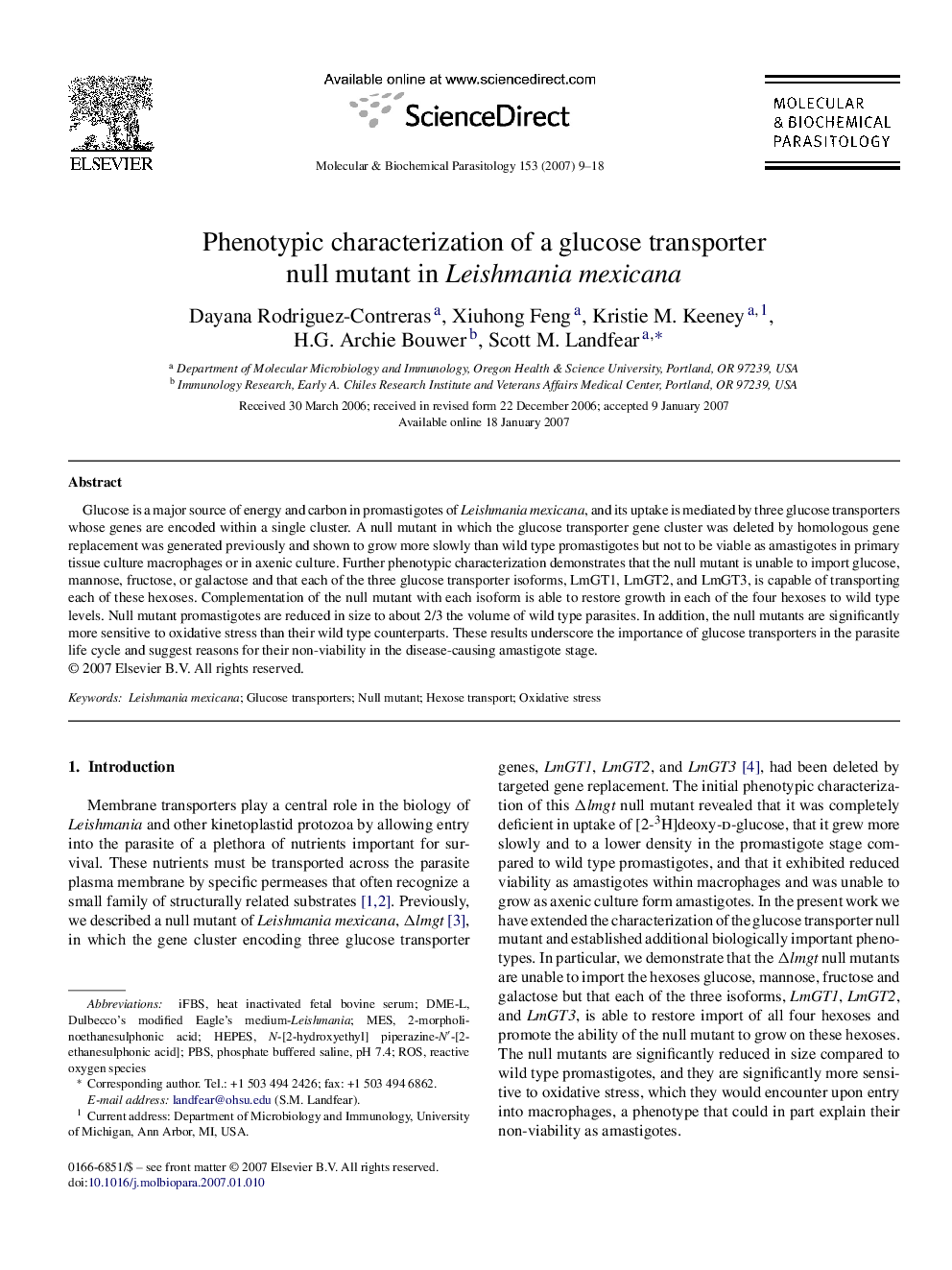| Article ID | Journal | Published Year | Pages | File Type |
|---|---|---|---|---|
| 5916077 | Molecular and Biochemical Parasitology | 2007 | 10 Pages |
Abstract
Glucose is a major source of energy and carbon in promastigotes of Leishmania mexicana, and its uptake is mediated by three glucose transporters whose genes are encoded within a single cluster. A null mutant in which the glucose transporter gene cluster was deleted by homologous gene replacement was generated previously and shown to grow more slowly than wild type promastigotes but not to be viable as amastigotes in primary tissue culture macrophages or in axenic culture. Further phenotypic characterization demonstrates that the null mutant is unable to import glucose, mannose, fructose, or galactose and that each of the three glucose transporter isoforms, LmGT1, LmGT2, and LmGT3, is capable of transporting each of these hexoses. Complementation of the null mutant with each isoform is able to restore growth in each of the four hexoses to wild type levels. Null mutant promastigotes are reduced in size to about 2/3 the volume of wild type parasites. In addition, the null mutants are significantly more sensitive to oxidative stress than their wild type counterparts. These results underscore the importance of glucose transporters in the parasite life cycle and suggest reasons for their non-viability in the disease-causing amastigote stage.
Keywords
Related Topics
Life Sciences
Biochemistry, Genetics and Molecular Biology
Molecular Biology
Authors
Dayana Rodriguez-Contreras, Xiuhong Feng, Kristie M. Keeney, H.G. Archie Bouwer, Scott M. Landfear,
